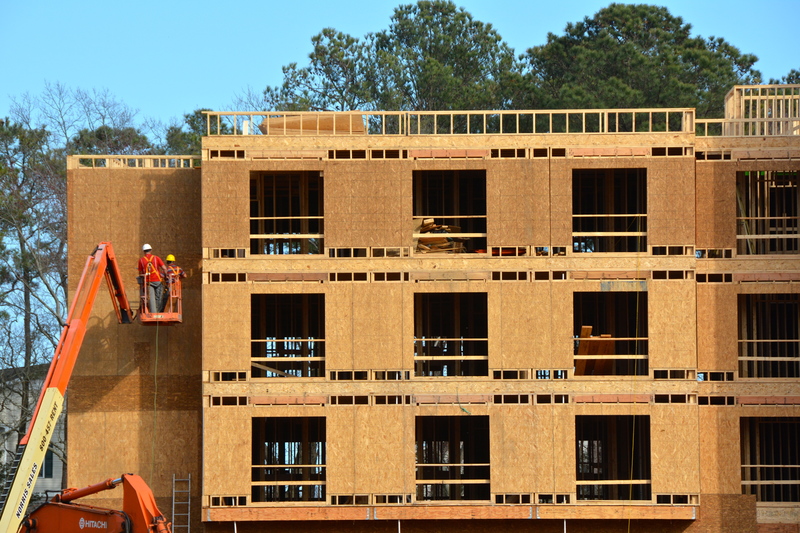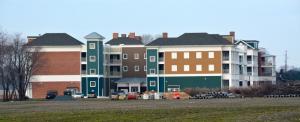Sussex building regulations are tall order
Most Sussex County building height regulations are unchanged since 1971, but until recently, there was little discussion about building height.
With developers seeking taller and taller buildings, the issue has come front and center. On April 1, county council, planning and zoning and board of adjustment members gathered for a rare joint workshop to air their thoughts on the matter.
Assistant county attorney Vince Robertson said the workshop was timely because county officials have an ordinance pending to change long-standing building height regulations. Robertson said uncertainty persists about the code's height limits.
Before acting on a new ordinance, planning and zoning and county council requested a workshop.
In most zoning districts, building height is limited to 42 feet. However, wording in the code permits “semi-public” or “public buildings” to exceed that height, up to 60 feet. The proposed ordinance would remove the words “semi-public” and “public.”
Robertson said as currently worded, the exception not only includes institutional buildings such as schools, hospitals and government buildings, but also other buildings open to the public such as hotels.
Robertson said the issue surfaced when a lawyer representing the developer of the Vineyards at Nassau Valley questioned the code's maximum height regulations. Because the building along Route 9 near Lewes offers commercial space on the first floor, it met the criteria for a semi-public building that could exceed 42 feet.
At 60 feet tall, the structure is one of the tallest buildings in unincorporated Sussex.
The amended ordinance would limit buildings that could be built up to 60 feet to government buildings, hospitals and schools when those buildings are permitted in a zoning district. Churches and temples could be constructed as high as 75 feet.
Height variances beyond 42 feet can be granted by the board of adjustment in hardship cases.
Municipalities have their own height limit regulations.
In addition, Robertson pointed out that there are no building-height restrictions in residential planned community overlay zones, but building heights must conform with buildings in the area. In other high-density zoning residential districts – HR-1 and HR-2 – the limit is 52 feet and the limit is from 52 feet to 125 feet in industrial zones.
Robertson said if county officials want to better define building height regulations they have several options: approve the pending ordinance; amend height limits within specific zoning districts; or require all buildings over height limits to apply for a variance.
Why a push for taller buildings?
Several officials asked why there is a push now to build taller buildings when the option has been available for more than 40 years.
Lawrence Lank, the county's director of planning and zoning, said the option has always been in the code. “I guess nobody picked it up,” he said.
Planning and Zoning Commission Chairman Bob Wheatley said it could be tied to real estate prices. “It's now a viable option to go up because of the cost of land,” he said.
Councilman George Cole, R-Ocean View, who has called the additional height a loophole in the code, said 42 feet should be the norm except for hospitals and schools. “It's not meant for buildings like hotels,” he said.
“We need to live with what we have. Show me the need because the box is full. Coastal Sussex County is at capacity,” Cole said. “The height limit has historically been interpreted as 42 feet.”
“What objection is there to a 60-foot high building?” Wheatley asked. “It's 42 feet now, and that's just 18 more feet. There seems to a presumption that's a bad thing, and I'm trying to understand that.”
“I don't understand why people are eager to keep going up,” Cole replied. “We are already flexible and have a cluster development option. People who live here are under assault, and to encourage higher density sounds good on paper but it ends up creating bigger problems.”
Wheatley said fire safety could be an issue.
“Fire companies say they are comfortable with 60-foot buildings, so it's not a problem,” said Councilman Vance Phillips, R-Laurel.
Duane Fox, of the Office of the State Fire Marshal, said the buildings – regardless of height – would have sprinklers and alarms. The higher buildings are constructed, he said, the more fire suppression regulations are in place. Taller buildings even have wider fire lanes for better fire truck access.
“I think you all got a better picture how this all fits together,” Robertson said.























































